#workwoman's guide
Explore tagged Tumblr posts
Text
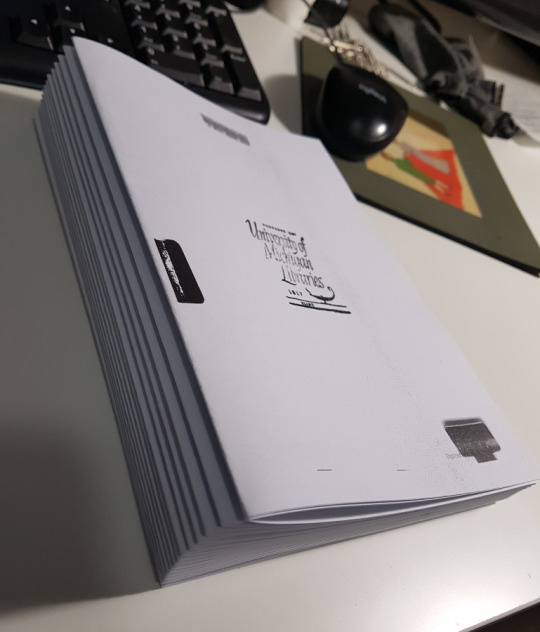

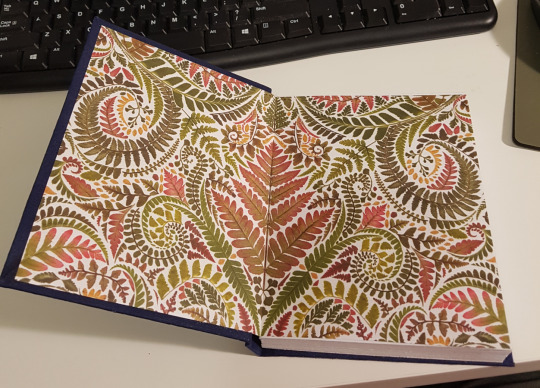

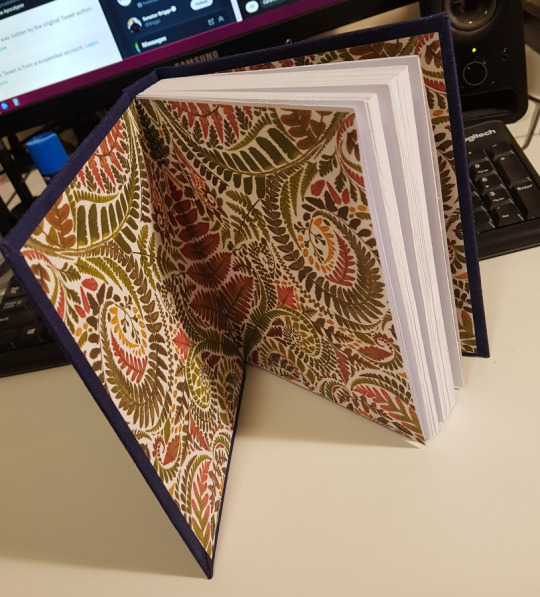
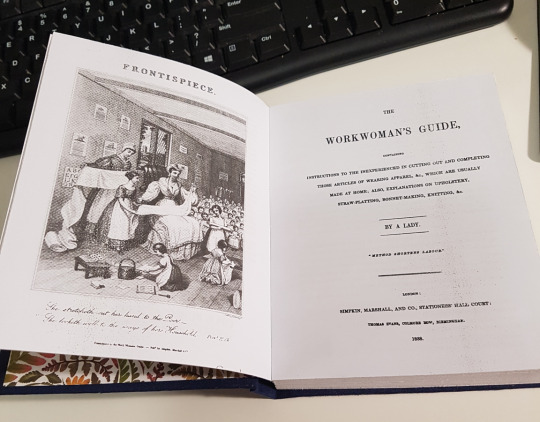
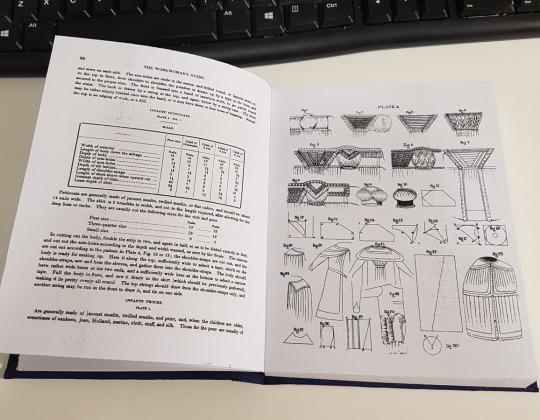
Somewhere along the line, I had the startling realisation that I could print and bind digitally archived old books that are nigh impossible to find print copies of.
I've had a copy of "The Workwoman's Guide" sitting on my computer for some time - it's a great resource if your looking at patterns for clothing in the 1830s specifically - a lot of more modern books that cover historical costuming don't tend to cover this period overmuch. Being written in that period as well though, finding a physical copy is very unlikely for me.
Now, Adobe Reader does have a pamphlet folding option in its print settings, but it does not have the knowhow to figure out multiple signatures all by itself. As long as you're willing to do a little maths however, it's actually pretty simple to convert a .pdf document into bookfold signatures.
The fancy leaf paper came back for the endsheets on this one, and I lined them up so that the fold of the endsheet was right down the middle of the mirrored pattern, which I think looks so nice :)
I still need to decorate the cover, but still not 100% what I want to do with it. It's a good solid book though, you can give someone a good whack with it.
10 notes
·
View notes
Text
And for those of you that are curious about reprints of The Workwoman's Guide from 1838 (not that anyone is reading this), here's the edition available, once again, from the excellent Amazon Dry Goods.
While the PDF is free, i do struggle with reading it and getting a clear idea of what the fuck is going on in the illustrations on my tablet, and having to keep my laptop open on my desk while I'm trying to make something would suck. The cost of printing it out at home or having it printed somewhere at staples was about the same as/substantially higher than just getting a copy, so I decided to save my eyes and go for it. I can write notes to myself in this anyway.
Seam ripper for scale. It's a really good printing, very clear and easy to read, and the illustrations all look great. It's a paperback as well, which saves on weight on our already burdened shelves of references/horde of gothic lolita bibles.



#historical sewing#historical costuming#Workwoman's guide#victorian sewing#victorian costuming#not that anyone is reading my shit anyway#posting this into the void just helps me feel like im contributing to something
5 notes
·
View notes
Text
i finally know enough to understand the workwoman’s guide and this book is INCREDIBLE. i could make a whole wardrobe just from the instructions and plates here. such amazing little historical tidbits, too… and so practical! make your bodice pleats removable on one end so the washerwoman has an easier time! here’s how to open up stays for nursing! get one pair of stays professionally fitted and ask them for an unsewn version to use as a pattern!
43 notes
·
View notes
Text
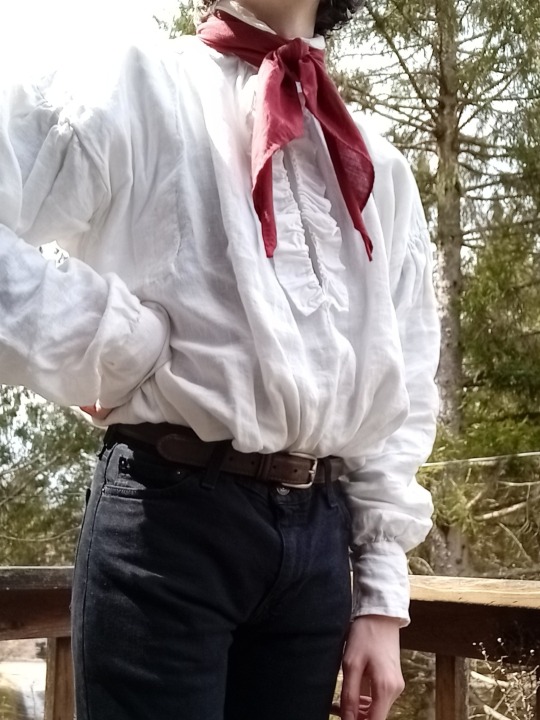
finished my new shirt a week or two ago but didn't have an opportunity to take good pictures till just now! (don't mind the modern pants lol)

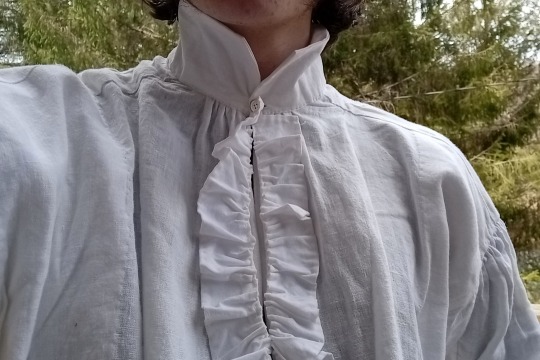
the design is quite close to the specifications of the same book I used for the last couple (The Workwoman's Guide, published 1838), but for a formal/"gentleman's" shirt instead. the main differences lie in how much fabric is used and, of course, the frills/ruffles. I did leave out the bib or front that the book directs you to let into the chest; I couldn't find any reference examples online of a shirt with both frills and a let-in front, so I just did the frills.
very happy with how this one turned out--I have some quibbles with the collar, which I think could stand to be taller/fuller, but I have other things I wanna get to so I'm leaving it as is. for now I have a fancy shirt suitable for wearing in any situation where I want to look poetic and/or fancy. ideal wear for drowning during an ill-advised Italian boating trip
also depicted in the first image is my new cravat that I made the other night--an 18 x 18 right triangle of red muslin, folded up and tied. I fancy it is rather grand, if you will
next time i might have a waistcoat to show? maybe?
91 notes
·
View notes
Video
Workwomans Guide, 1840 by Ann Longmore-Etheridge
0 notes
Text
Love 19th century books they all have names like The Cyclopaedia of Practical Receipts in All the Useful and Domestic Arts or The Workwoman's Guide,: Containing Instructions to the Inexperienced in Cutting Out and Completing Those Articles of Wearing Apparel, &c., which are Usually Made at Home: Also, Explanations on Upholsery, Straw-platting, Bonnet-making, Knitting, &c. or The Art of Cleaning, Dyeing, Scouring, and Finishing, on the Most Approved English and French Methods: to Which is Added a List of Prices, Also Abstracts of Two acts of Parliament Relative to Apprentices, Workmen, and Jobbing by Journeymen Dyers
65 notes
·
View notes
Text
Victorian books on pattern making/garment cutting (bonus: some Edwardian ones as well):
The Workwoman’s Guide (1838)
The Archetypal Consummation (1845)
The Garment Cutter and Ladies Guide (1853)
The Science and Geometry of Dress (1876)
The Dress and Cloak Cutter (1881)
The National Garment Cutter (1884)
Hecklinger's Ladies' Garments (1886)
The National Garment Cutter (1888)
The Self-Balancing System of Cutting Ladies' Garments (1891)
The Diamond Garment Cutter (1895) and its Instruction Book
The "Keystone" Jacket and Dress Cutter (1895)
Margaret Blair System of Garment Drafting (1897)
New Superlative System of Cutting Ladies' Garments (1901)
The American System of Dressmaking (1907)
N. S. Sheifer's System of Designing and Grading Ladies', Misses' & Children's Garments (1908)
The "Standard" Work on Cutting Ladies' Tailor-Made Garments (1908)
New Teacher of Ladies' Home Tailoring (1910)
Rosenbleet's Perfect System Of Ladies' Garment Cutting (1911)
Please note that this post is just a compilation of books I have found online. I will be updating this list as I come across other great books.
From what I can remember, none of these books have patterns for stays/corsets. Don’t worry; if you are looking for stays/corsets, check this post instead.
251 notes
·
View notes
Text
Can I get a reasonable-ness check on this? It’s my first time working from The Workwoman’s Guide.
Quilting cotton is a reasonable substitute when a pattern calls for calico, right? (It’s for a bonnet, which is going to be stiffened anyhow, so I’m even more convinced that it’s reasonable.)
14 notes
·
View notes
Note
i'm tired but do you have any resources for men's underwear? preferably 1790-1840-ish but at this point i'll take whatever u got
Hmm well I haven’t really done anything later than the 1790′s (I did a c. 1800 flannel undershirt a few years ago but haven’t made any other 19th century clothing) but I do have a pinterest board of mens underwear that contains a lot of drawers and waist cinchers from the 19th century, and my 18th century menswear resources post has links to some stuff on shirts. Here is a link to a post about men’s stays, which mostly fall into that time range.
The workwoman’s guide probably has some good stuff, I haven’t read it so all I know is it's from 1838 and it has a lot of instructions for making clothing.
20 notes
·
View notes
Text
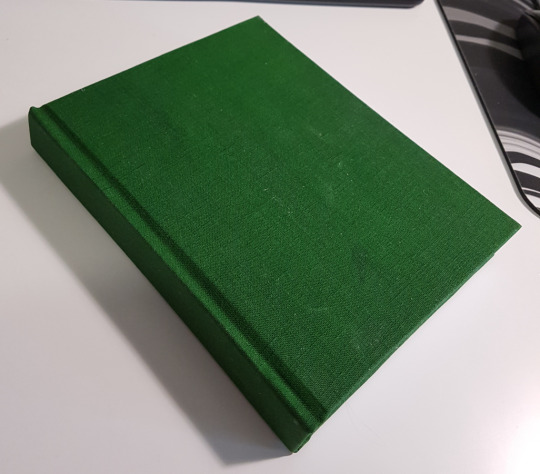
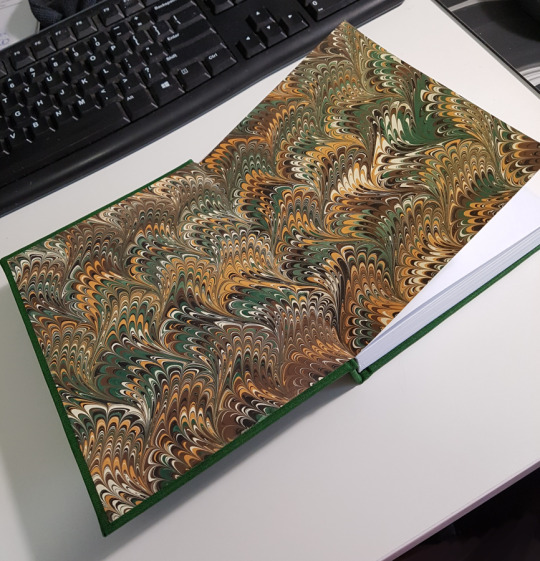
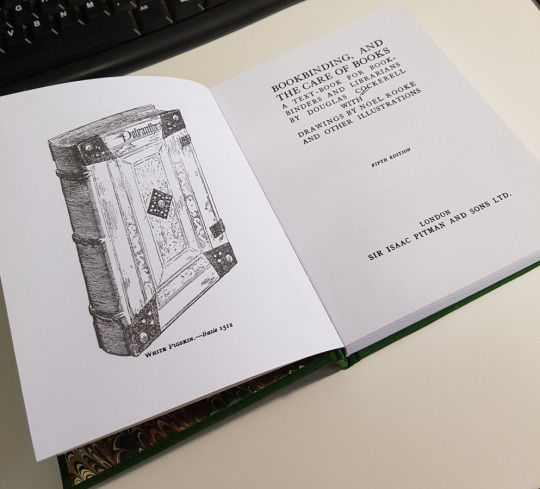
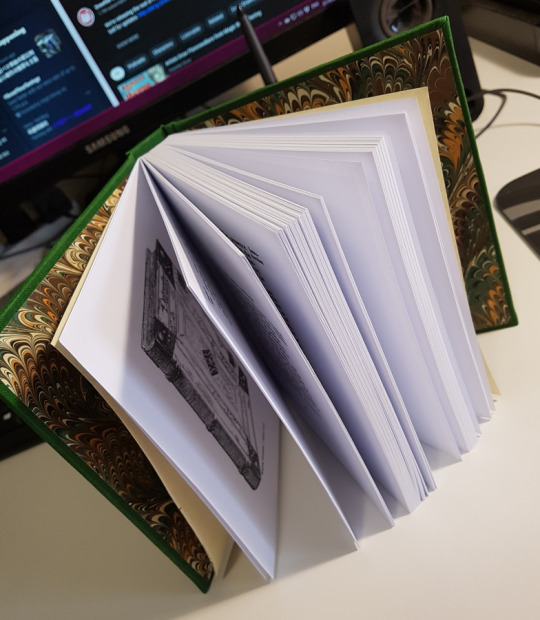
Naturally, after tackling "The Workwoman's Guide," I went and hit up Project Gutenberg to see if I could find a copy of "Bookbinding, and the Care of Books" by Douglas Cockerell, which was printed in 1901 and considered a pretty good reference for bookbinding.
I reformatted the whole thing in Word (which is surprisingly good for automatically splitting up a whole document for bookfold signatures).
For the cover I used a homemade bookcloth I made using a green linen, and a book glue I made using tapioca starch of all things. I had previously tried making book glue using fabric starch, but overcooked it and it was a little too thick to use. Starch is starch though, and the tapioca starch worked just as well.
The end sheets are a proper marbled paper I ordered through binding supply place down in NSW who's name escapes me at the present. There's not many binding supply places here though, so they're not hard to find 😅
7 notes
·
View notes
Text
Working on those whipped gathers! A painful technique. I'm hoping that if I complain enough about them I will "ironically" be able to do them well.

This cap is made from a pattern in The Workwoman's Guide, originally published in 1838 (iirc). The only change I made was to make the face opening rounded rather than curving out to a point at the top of the head; all of the proportions and measurements are just as the author described.
The great thing about how plain it is is that it will probably work for roughly 1800-1850. At thirty-two, I'm certainly old enough that I should be wearing a cap during this period!
15 notes
·
View notes
Text
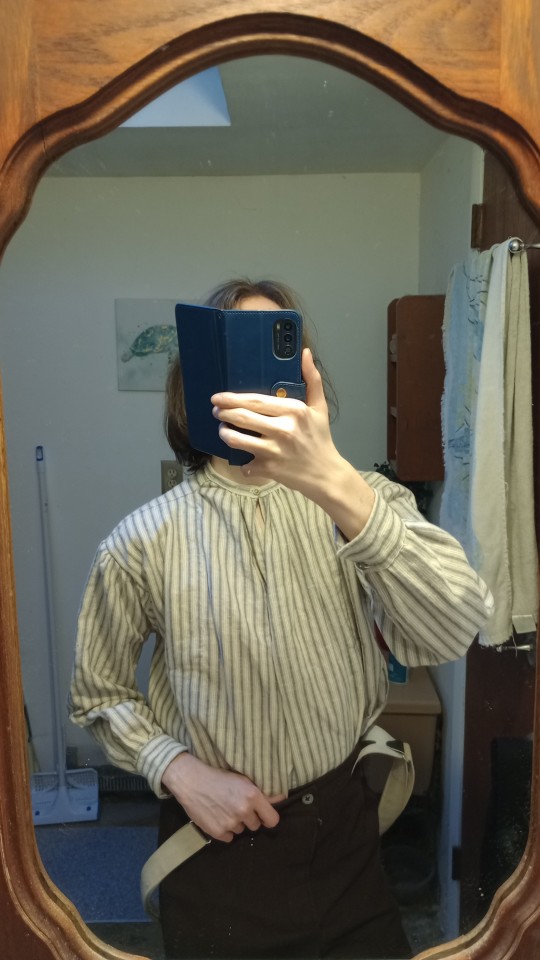
and it's finished! my new mid-19th-century style workshirt is done. made it with a heavy shirting linen I got remnants of for cheap and made it almost exactly to the plan of The Workwoman's Guide (1838/1840) recommendations for laborers' shirts. the entire shirt is hand sewn with stitches appropriate to the period, like felled hems and full backstitching around the armscyes.
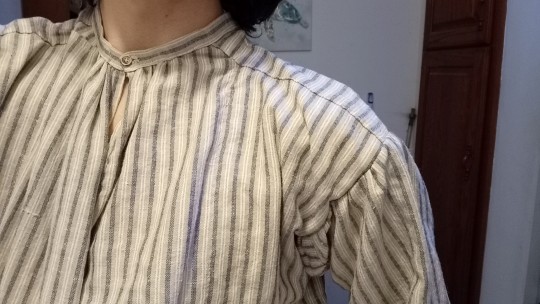
closeup of the shoulder and collar. I made it with a narrow band to allow for detachable collars to be used with it (I have a couple prefabricated ones from when I was first getting into this.) I also gathered the sleeves and collar properly, rather than simply pleating them like last time--much trickier, but more accurate to the examples from the period, and I think more aesthetically pleasing (though my gathers are far from professional-quality.) I had considered adding more buttons down the bosom slit but for the time being I'm happy with the one; the folds of the gathers and any neckcloths I wear basically conceal the hole.

here it is as part of an ensemble (everything else in the photo is prefab.) you can see the detachable collar buttoned on here. unfortunately, the stripes clash with some of my more eccentric ties and cravats, so basic black it is to accompany this one. the collar likes to ride up a little bit and expose my neck in a couple spots, but I've found that wearing the vest and tie help to keep it in place.
only thing on this shirt I'm dissatisfied with is that the sleeves are a little on the short side, which I think is probably just a combination of me being skinny enough to want the small shirt but tall enough that it's a little short, and the general thing where 19th century people were on average a little shorter than people are today. the version of the book I used actually had alternate longer sleeve sizes, because the ones in the first edition were "found scanty", which makes them still being too short kind of funny to me. anyway I'm not changing it because lengthening the sleeves would probably require me to cut fresh, extra-long cuffs and reattach them & I am not doing all that to correct a centimeter of discomfort lmao
anyway, fun project overall! looking forward to my next one.
#sewing#historic clothing#product of like 20 hours blood and sweat (i tried it on multiple times and pricked myself while felling the lining on)#sewing projects
54 notes
·
View notes
Photo

Notes on veils from The Workwoman’s Guide (1940)
Notes and direction on mourning can be found on p. 122
0 notes
Photo

The Workwoman’s Guide (1838)
0 notes
Photo

I made the elderly Quaker cap from Workwoman's Guide. I'm not fully convinced I did it correctly, as the instructions are somewhat open to interpretation. I want to try another method of joining the chin-piece and the back ruffle, but alas, it will have to wait. It's Very Secure on the head. It goes nowhere. I rather like that it can go almost flat (easier for washing and ironing) and then ruffle back up after with the drawstrings. The drawstrings allow for some leeway in how it sits, lower the way I have it here, or higher like the other caps in the book. With the lower back, it feels much earlier than 1840, which should suit my Regency customer. #19thcentury #workwomansguide #quaker #historicalsewing #historicalclothing #1840 #regency https://www.instagram.com/p/CSLbt5LAGMt/?utm_medium=tumblr
0 notes
Text
"High Dress" pattern - 1830

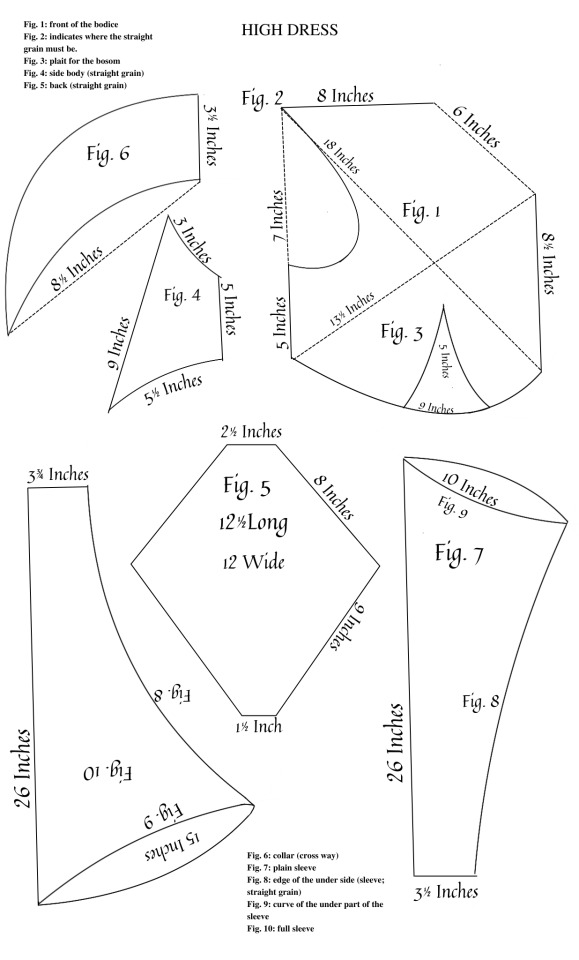
First pitcure: the original pattern
Second picture: traced/enhanced version made by me (please do not repost it).
For more instructions on how to cut/construct this garment, I’d advise you to read The Workwoman’s Guide and the original magazine where this pattern was published, The Female's Friend, and General Domestic Adviser.
#historical costuming#historical fashion#victorian era#fashion history#19th century fashion#1830s#regency period#fashion#pattern#19th century
16 notes
·
View notes
